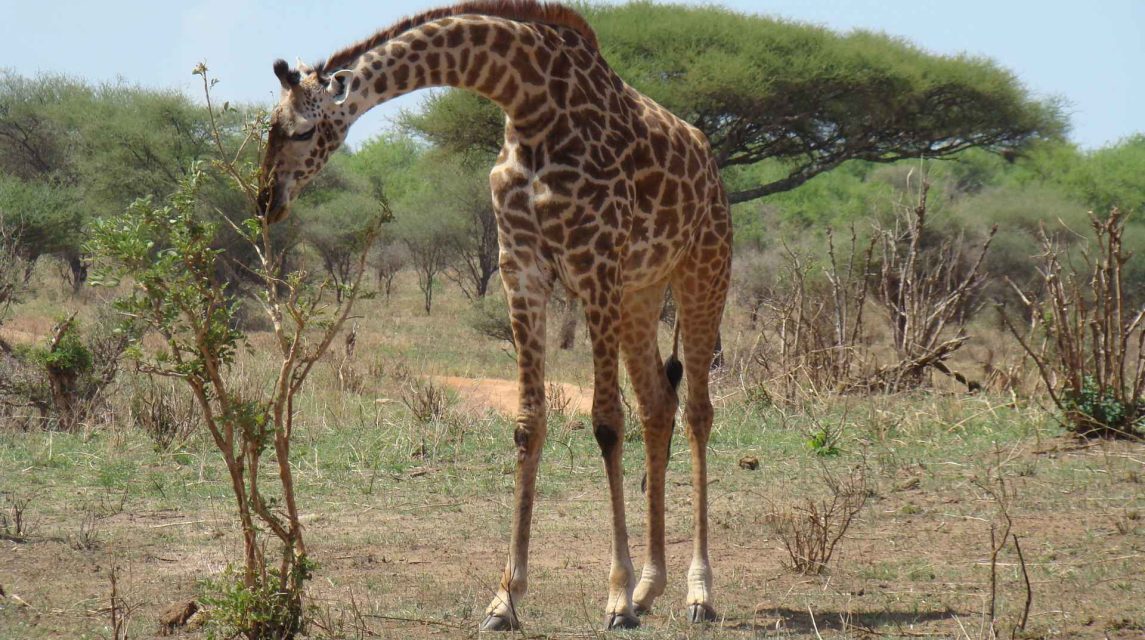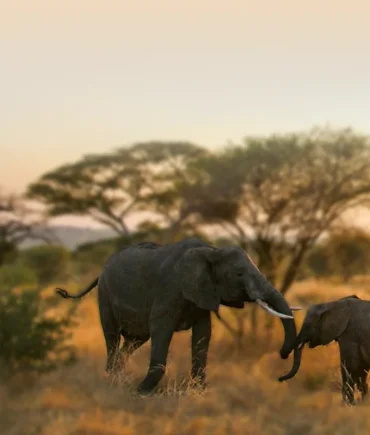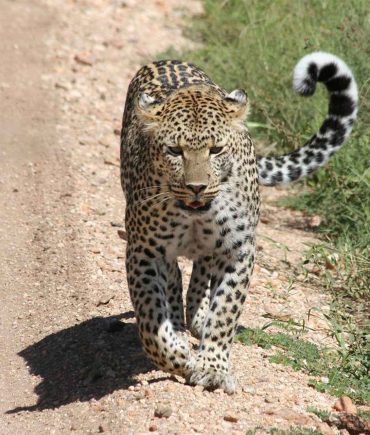Tour overview
If you’re seeking a luxurious safari experience in Tanzania, look no further than our Tanzania Lodge Safari tour package. Offering accommodations ranging from luxurious to mid-range tented camps and lodges, you’ll stay in close proximity to renowned tourist spots where wildlife sightings are abundant, ensuring an enhanced viewing experience. These camps and lodges not only feature comfortable bedding and amenities but also prioritize safety. Commencing your journey from either Moshi or Arusha, you’ll begin with a visit to Tarangire National Park, followed by exploration of the expansive plains of Serengeti National Park and the pristine wilderness of Ngorongoro Conservation Area. Finally, you’ll venture to Lake Manyara National Park, home to a plethora of bird species along its tranquil shores.
By the tour’s conclusion, you’ll have gained a wealth of knowledge about Tanzania Lodge Safari experiences and enjoyed the unique bush encounters provided by Hilltop Travel, ensuring an unforgettable safari adventure.
Itinerary summary
Day 1 | Moshi/Arusha to Tarangire National Park
Day 2 | Tarangire Area to Lake Natron
Day 3 | Lake Natron to Serengeti National Park
Day 4 | Serengeti National Park
Day 5 | Serengeti National Park to Ngorongoro Conservation Area
Day 6 | Ngorongoro Crater to Mto wa Mbu
Day 7 | Mto wa Mbu to Lake Manyara to Moshi/Arusha
Itinerary Details
Every day of our itinerary has been meticulously crafted to ensure you have an unforgettable experience. From discovering iconic landmarks to savoring delectable local dishes, each day promises adventure and thrill. Come along with us as we guide you through a journey across some of the most captivating destinations on the planet.
You will be picked up in the morning and after a short briefing you will head off in direction of the Tarangire National Park. The park with its savannah, baobab trees, and seasonal swamps is home to huge elephant herds. This also includes a selection of mammals ranging from giraffes, bushbucks and hartebeests to zebras and warthogs. Besides this some of the most ferocious African predators like buffaloes, lions, leopards and the cheetahs are rarely spotted here. This would be an awe-inspiring experience to watch the wandering animals from the open roof of our safari vehicle. You would head to a nearby lodge in the late afternoon for the rest and the overnight stay.
After breakfast you will leave the area around Tarangire National Park and head to the multicultural village of Mto wa Mbu. From here you will travel on a spectacular and very bumpy gravel road along the Rift Valley Escarpment with Ol Doinyo Lengai “the holy mountain” of the Masai in the distance. Today’s destination is the typical Masai village of Ngare Sero in the hot and dusty Rift Valley. From a distance you might be getting to see the pick glow of the flamingoes while breeding and feeding and with the going down of the sun you will join a Masai guide on a walk to a nearby waterfall. After enjoying the beauty of the nature here you would return to the campsite for the dinner and the overnight stay.
After an early start, you will travel along adventurous dirt tracks with breath-taking views as your vehicle climbs out of the Rift Valley to reach the grassy plains of the Serengeti by midday. In Maasai Serengeti means “endless plains” and truly you would find the grassland savannah stretching here to the horizon with the dotted grazing animals. Serengeti is a must sought park for anyone planning for Tanzania safari. Because, it is the park , where the greatest wonder of the world “ The Annual migration of wild beasts “ is conducted in which millions of the animals march in quest of fresh pasture and water without caring for their life and even the life of their calves. After your game viewing you will overnight at a lodge in the northern or central part of the park.
The entire day is dedicated to game viewing in the Serengeti National Park. You will either go on a full day game drive or join early morning and afternoon drives in the Seronera area, depending on last night’s stop. The best time to find the wild beasts here is between December and May and for the calving session January and March is the right session to visit. The Seronera area is also the best place to spot the shy and nocturnal leopard. You will spend the night at a lodge in the Seronera area.
The morning is set aside for another game drive in the Serengeti and you might spot some creatures that you haven’t seen yet. Animals tend to be more active in the morning before the temperatures soar around midday. After lunch, you will leave the plains of the Serengeti and travel to the highlands of the Ngorongoro Conservation Area. You will overnight at a lodge directly on the Ngorongoro Crater’s edge with a view over the collapsed volcano. It is a perfect spot to enjoy a sundowner at sunset.
Rise and shine! It is up at daybreak to take on the steep path leading down into the 600 m deep crater. The slopes are forested but soon the landscape changes to savannah with the occasional acacia tree here and there. The wildlife in the crater is just breath-taking and with a little luck you might see the “Big Five” – lion, elephant, buffalo, rhino and leopard. You should also see warthogs, wildebeests, zebras, hippos and some of the more than 500 bird species of the area. After an entire morning of game viewing and a picnic lunch in the crater, you will travel to Mto wa Mbu where you will overnight at a lodge.
After a leisurely breakfast drive to the Lake Manyara National Park. Not only is this park a bird-lover’s paradise with over 400 species of birds, but is also home to primates such as baboons and blue monkeys and many herbivores, such as elephants, hippos, wildebeest, impalas and giraffes. You might even catch a glimpse of the more carnivorous inhabitants, such as leopards and lions. Through the pop-up roof of your safari vehicle you will see the landscape changing from lush acacia woodlands to grassy floodplains, where colonies of flamingos and other water fowls can be found on the alkaline Lake Manyara shoreline. After extensive game viewing you will leave the park and you will start your return trip to Moshi/Arusha. You will be dropped off at a hotel of your choice or at the airport.
Includes & Excludes
Pick up and drop off from Kilimanjaro International airport.
2 nights of hotel Accommodation before and after safari (breakfast included)
Transportation in a 4×4 Toyota Land cruiser with pop-up roof
Professional and Experienced English-speaking safari guide
All national park fees
All accommodation in safari lodges under your program
Three meals per day on safari
Bottled drinking water throughout the tour
Medical kit
All mentioned activist as per itinerary
International or Local Flights
Optional activities
Alcoholic and soft drinks
Visa fees
Tips and gratuities to driver/Safari guide (20usd/day – recommended)
Personal spending money for souvenirs etc
Travel insurance
Top Experiences
Frequently Asked Question
The best time to go on a safari in Tanzania largely depends on what you want to see. Generally, the dry season from late June to October is ideal for wildlife viewing. During this period, animals congregate around water sources, making them easier to spot. Additionally, the Great Migration in the Serengeti, where millions of wildebeest and zebras move in search of greener pastures, peaks around June and July for river crossings and from late January to February for the calving season.
Tanzania is home to some of the most renowned national parks and reserves in Africa. The Serengeti National Park is famous for the Great Migration and abundant wildlife. Ngorongoro Crater is a UNESCO World Heritage Site and offers an incredible concentration of wildlife in a stunning volcanic caldera. Tarangire National Park is known for its large elephant herds and baobab trees, while Lake Manyara National Park is famous for its tree-climbing lions and diverse birdlife. The Selous Game Reserve and Ruaha National Park in the south offer more remote and less crowded safari experiences.
Tanzania offers a variety of safari experiences to suit different interests and budgets. Classic game drives are the most common and allow you to see wildlife from the comfort of a 4x4 vehicle. Walking safaris provide a more intimate experience, allowing you to explore the bush on foot with a knowledgeable guide. Hot air balloon safaris in the Serengeti offer a unique perspective of the landscape and wildlife from above. Night safaris, available in certain parks, give you the chance to spot nocturnal animals. Additionally, cultural safaris can be arranged to visit local tribes and learn about their way of life.
Packing for a safari requires careful consideration to ensure comfort and practicality. Essential items include light, breathable clothing in neutral colors to blend in with the environment and avoid attracting insects. A wide-brimmed hat, sunglasses, and sunscreen are crucial for protection from the sun. Sturdy, comfortable walking shoes or boots are recommended for walking safaris. Binoculars and a good camera are essential for wildlife viewing and photography. Additionally, bring insect repellent, a first aid kit, any necessary medications, and a reusable water bottle. Layered clothing is advisable as temperatures can vary greatly from morning to evening.
Yes, certain vaccinations and medications are recommended before traveling to Tanzania. It's advisable to consult with a travel health specialist or your doctor well in advance of your trip. Common vaccinations include those for hepatitis A and B, typhoid, and yellow fever (particularly if coming from or transiting through a yellow fever endemic area). Malaria is prevalent in many parts of Tanzania, so taking antimalarial medication is highly recommended. Additionally, ensure you are up to date with routine vaccinations such as MMR (measles, mumps, rubella), DPT (diphtheria, pertussis, tetanus), and polio.
Tanzania is generally considered safe for tourists, and the safari industry is well-regulated with experienced guides and operators. However, as with any travel, it's important to exercise common sense and take precautions. Always follow the instructions of your guide, particularly when it comes to wildlife viewing and safety. Be aware of your surroundings and secure your belongings. In terms of health, it's important to take preventive measures against malaria and stay hydrated. It's also advisable to check travel advisories and register with your embassy before traveling.
A typical day on safari in Tanzania often starts early, around sunrise, to take advantage of the cooler temperatures and increased animal activity. After a light breakfast, you'll embark on a morning game drive, returning to camp for brunch or lunch. The midday hours are usually spent relaxing at the lodge or camp, as wildlife activity slows down in the heat. In the late afternoon, you'll head out for another game drive, returning by sunset. Dinner is typically enjoyed at the camp, followed by time to unwind and share stories of the day. Some lodges also offer evening activities such as stargazing or cultural performances.
Yes, many lodges and tour operators in Tanzania cater to families and offer child-friendly safari experiences. However, it's important to choose the right itinerary and accommodations to ensure a safe and enjoyable trip for everyone. Some lodges have age restrictions for certain activities, such as walking safaris, but they often provide alternative activities for younger children. Family tents, educational programs, and specialized guides can enhance the experience for kids. It's also essential to consider health precautions, such as malaria prevention, and ensure that your children are comfortable with the travel arrangements.
The cost of a safari in Tanzania can vary widely depending on factors such as the length of the safari, the type of accommodations, the level of luxury, and the time of year. Budget safaris, which often involve camping or staying in basic lodges, can start at around $200-$300 per person per day. Mid-range safaris, with more comfortable lodges and additional amenities, typically range from $400-$700 per person per day. Luxury safaris, offering high-end lodges, private guides, and additional services, can cost upwards of $1,000 per person per day. These costs usually include accommodation, meals, park fees, and game drives, but may not cover international flights, visas, or personal expenses.
Most international travelers fly into Kilimanjaro International Airport (JRO) near Arusha, or Julius Nyerere International Airport (DAR) in Dar es Salaam. Arusha is the gateway to the northern safari circuit, including the Serengeti and Ngorongoro Crater, while Dar es Salaam is the entry point for southern parks like Selous and Ruaha. From these airports, you can take domestic flights or arrange ground transportation to your safari destination. Some safari packages include internal flights to save travel time.
Tanzania is home to an incredible diversity of wildlife. You can expect to see the "Big Five" (lion, leopard, elephant, buffalo, and rhino) in many of the parks, particularly the Serengeti and Ngorongoro Crater. Other common sightings include cheetahs, giraffes, zebras, wildebeest, hippos, crocodiles, and a variety of antelopes. Birdwatchers will also be delighted with over 1,000 bird species, including flamingos, eagles, and hornbills.
Absolutely! Tanzania offers a wealth of activities beyond safaris. You can combine your safari with a visit to Zanzibar for stunning beaches, diving, and cultural experiences. Climbing Mount Kilimanjaro, the highest peak in Africa, is another popular option. Cultural tours to visit local tribes, such as the Maasai, and explore their traditions and way of life can add depth to your trip. Additionally, activities like hiking in the Usambara Mountains or exploring the historical sites of Stone Town in Zanzibar provide diverse experiences.
Verified My friend and I had an amazing vacation and made many memories that will last a lifetime. Our September 29th day trip to Mandara Hut along the Marangu Route was fantastic! My friend and I had an amazing vacation and made many memories that will last a lifetime. Our amazing guide, Daniel, made the walk both entertaining and instructive with his knowledge of Kilimanjaro and his enthusiasm for the mountain. The feeling of achievement at Mandara Hut, the breathtaking vistas, and the thick rainforest were all ideal. The owner, Daniel, made sure we were comfortable and educated at every turn, going above and beyond to make our stay unforgettable. Hilltop Travel and hiring Daniel as your guide are both excellent choices if you're thinking about visiting Kilimanjaro.Verified Any picture of kilimanjaro summit, Thank you to Hilltop Travel for making my recent day trip to Mount Kilimanjaro via the Marangu Route so unforgettable. Every step of the process was smooth and well-planned. An authority on the local landscape and customs, our guide ensured our comfort and kept us informed at every turn. The actual trek was magnificent, with beautiful views of the surrounding forests and towering hills. There were lots of opportunities for us to enjoy the breathtaking view, and the pace was ideal. Our guide provided fascinating information on the history of the mountain, the Chaga people's culture, and the local flora and fauna.Regardless of your level of competence, Hilltop Travel guarantees a safe, instructive, and genuinely remarkable Kilimanjaro experience. Highly recommended.Verified 7-day Machame trek with Hilltop Travel, Climbing Mount Kilimanjaro was an unforgettable adventure! I completed the 7-day Machame trek with Hilltop Travel, and I can’t recommend them enough. The entire journey, starting on July 23, 2024, was well-organized and expertly guided. From the very first step on the trail to the triumphant summit, the Hilltop Travel team provided exceptional support. A huge shoutout to our guide, Denis, whose unique approach truly made the journey special. His deep knowledge of the mountain, combined with his experience and calming presence, helped us navigate through the toughest parts of the trek. Denis not only guided us but also shared fascinating insights into the surrounding environment and local culture, which added so much to the experience. The support from Hilltop Travel team was also remarkable from the very start. Upon arrival at Kilimanjaro International Airport, the driver was waiting to pick us up, and we felt welcomed and well taken care of right from the start. Additionally, Daniel, the managing director, was incredibly helpful and attentive, ensuring everything went smoothly from the office side and checking in to make sure we had everything we needed. Their professionalism, knowledge, and attention to detail made the tough trek feel safe and enjoyable. The stunning landscapes and reaching the top were beyond words. If you're planning to conquer Kilimanjaro, climb with Hilltop Travel for an amazing experience.Verified My safari was Glorious My Mountain safari has been the best memory i made with my Girlfriend. We thought climbing a mountain was a very hard task but every step towards the roof of Africa was amaizing and with the help of wonderful guides from HillTop Travels just made things more easier. I look forward to booking my Safari with them because they made my experience worth it.Verified Good and frendly customer serviced The tour guides were exceptionally friendly and knowledgeable, providing fascinating insights that enriched my understanding and appreciation of the places we visited especially mount kilimanjaro. I felt well taken care of throughout the entire journey, and allowed me to truly relax and enjoy every moment.Verified kilimanjaro I recently climbed Kilimanjaro with Daniel as our mountain guide, and I couldn’t have asked for a better experience. Daniel is incredibly kind, intelligent, and very polite, with a great sense of humor that kept our spirits high throughout the journey. His expertise and leadership made me feel completely safe, and it was a true pleasure getting to know him and sharing this unique adventure. Highly recommended!
Excursions for Inspiration
Experience the awe-inspiring majesty of wildlife, the surreal beauty of natural wonders, captivating beaches, and Hiking on Mount KIlimanjaro with each unique Hilltop Travel. Not sure where to begin your journey? Whether it’s an adventure of a lifetime, a milestone celebration, or a well-deserved getaway, find joy in our curated collection of top destinations.




















